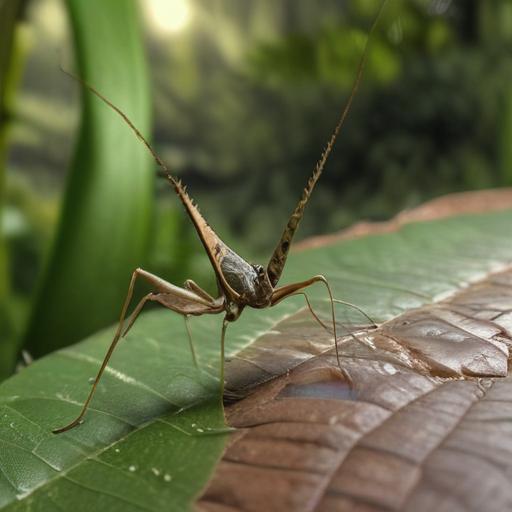A remarkable discovery has been made in Australia with the identification of a new species of stick insect named Acrophylla alta. If confirmed, this insect could be recognized as the heaviest known insect in the country, weighing in at 44 grams (0.09 pounds), which is comparable to the weight of an egg. If it earns the title, it will surpass the giant burrowing cockroach, Macropanesthia rhinoceros, currently the heaviest.
This notable find was made by a team of wildlife researchers exploring the diverse wet tropics of North Queensland, an area characterized by varying habitats and altitudes. These intricate environments support Australia’s highest diversity of phasmid insects—those that resemble sticks or leaves, which are experts in camouflage. Their elusive nature makes locating them quite challenging, but weather events can occasionally bring them down to the ground, providing rare opportunities for discovery.
Study author Ross Coupland noted that photos shared on citizen science platforms like iNaturalist indicated that there was potentially a large specimen in the area. Coupland and Professor Angus Emmott conducted a search in the Atherton Tablelands at high altitudes, where they identified the large stick insect among the treetops.
The specimens measured about 40 centimeters (15.7 inches) long and exhibited unique eggs, showcasing the diversity within species of stick insects. Professor Emmott explained that each species possesses distinct egg characteristics in terms of texture, surface design, and shape.
The stick insect’s considerable size could be attributed to its rich, cool, and wet habitat, which likely aids its survival. As Emmott pointed out, these environmental conditions have allowed A. alta to evolve into a larger form over millions of years. Its restricted habitat high in the rainforest canopy results in limited human encounters unless extreme weather or natural events bring it closer to the ground.
James Cook University has recently made arrangements for two specimens of this new species to be housed in the Queensland Museum. This will enable further scientific study, helping to enhance species identification and inform conservation efforts for the rich ecosystems housing these fascinating insects. Emmott emphasized the importance of understanding an ecosystem before effective conservation strategies can be implemented.
This recent discovery not only highlights the incredible biodiversity of Australia but also the ongoing dedication of researchers and citizen scientists in uncovering and protecting the wonders of nature.
